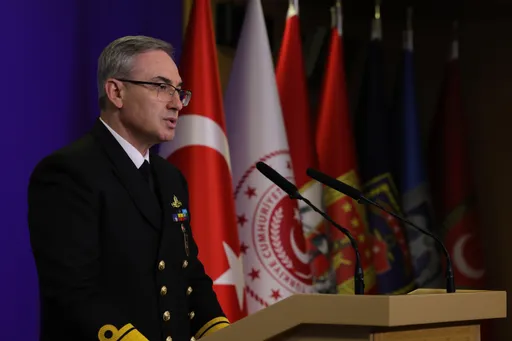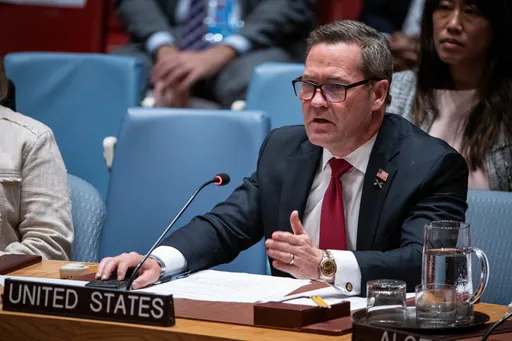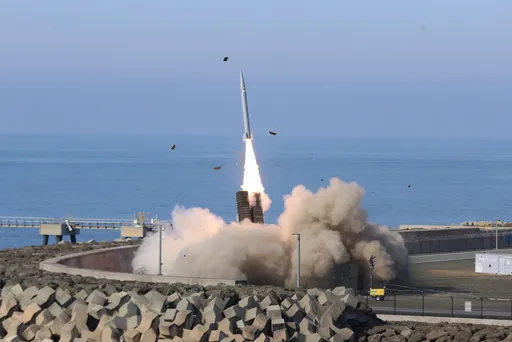When days of fighting between al Qaeda affiliate Hayat Tahrir Sham (HTS) and moderate armed rebel groups in Idlib resulted into the latter’s withdrawal, the only area left outside the control of the Syrian regime fell under the armed group’s administrative body, the Salvation Government.
It also raised the possibility that the next target of the regime forces would be the HTS-held parts of Idlib. The HTS has a reputation of being an extremist group involved in a series of terror related activities and neither the moderate rebel groups under Turkey-backed National Liberation Front (NLF) nor international stakeholders of the Syrian war accepts the group as a legitimate force in the region.
The group, however, is reportedly taking a moderate approach and rebrand itself so as to generate support among the local populace.
“...an individual or group moves up and down according to circumstance and capability. It’s a reality, not dilution,” Abdulrahim Attoun, a senior official from Hayat Tahrir Sham (HTS) said in a statement less than a month after explaining the group’s objectives from a religious perspective.
Soon after armed groups such as Noureddin Zinki left the area, many international aid agencies suspended their support to the developmental projects of the region, amid continuing civilian protests and air strikes that left at least 19 people dead.
The HTS, in response, put its Salvation Government forward as a “civil initiative”, replacing the moderate Interim Government, and promised that it won’t intervene in local affairs.
It also avoided confrontation with civilians although the group has been previously accused of detaining people on random charges and torturing and killings its ideological opponents.
For Omer Ozkizilcik, editor of Suriye Gundemi, a local journal on politics, the group’s new approach is aimed at legitimising its leadership in the region. But he maintained that the chance of stance doesn't necessarily mean the organisation has truly evolved into a people-friendly fighting unit.
The organisation’s predecessor al Qaeda and its affiliate al Nusra have also tried to balance its extreme ideology with pragmatic efforts, according to research by Charles Lister, a senior fellow at the Middle East Institute.
“There have been two wings within the group: the first one is more dogmatic and the second one is more pragmatic,”explained Ozkizilcik, the writer.
He doesn’t see the pragmatic wing emerging as a decisive factor and controlling its military unit.
“Even though the pragmatic wing wants to make some changes within the organisation, the organisation's source of power, the military side is in the dogmatic wing,” he says.
For him, the group is aware that repelling an offensive by re-branding the group won’t work as the international community still won’t accept the HTS as a legitimate actor.
When Russia brokered an agreement between Turkey and the Syrian regime in Sochi in 2018, the HTS featured in the talks. The regime put a condition before its counterpart saying the only way to achieve a ceasefire and prevent a large scale Syrian regime offensive was to establish a demilitarised zone in Idlib and eliminate the HTS along with other radical groups.
However, the deal couldn’t be implemented as HTS continued to attack the Syrian opposition. A regime offensive on the area could prompt a humanitarian disaster with thousands of people fleeing the air strikes.
Ozkizilcik says the organisation is following another policy in order to prevent the military intervention: “Holding more than three million residents of Idlib hostage to protect itself.”
Internal struggle of HTS: No enough manpower
According to Ozkizilcik, what really matters to HTS is to win the support of the Syrian opposition. Proving itself as a legitimate actor and avoid the Syrian regime offensive hardly matters to the group's leadership, he said.
“In Idlib, HTS doesn't have enough military manpower to cover/hold the front lines,” Ozkizilcik says.
“Without the support of the Syrian opposition, it can't control Idlib alone.”
In the first days of February, many reportssuggest that HTS is aiming to form a military council alongside the Free Syrian Army (FSA), an umbrella organisation of the opposition forces under the National Liberation Front (NLF) in northern Syria.
According to the reported plans, HTS would unite all armed factions under its Salvation Government.
However, the HTS would need to convince other rebel groups that denounce them. According to a recent HTS decision, the religious figures in the organisation are not allowed to make public comments on internal and external policy decisions.
Amid plans to unite all the opposition military factions, Abu Yaqzan al Masri, a religious figure in HTS has reportedly defected, after threatening that anyone fighting alongside the Turkish Armed Forces on the east of Euphrates should expect 'hellfire.'
Ozkilizcik says Yaqzan was later convinced to stay in the organisation.
For Ozkizilcik, HTS's plan to rope in other armed groups is next to “impossible.”
Firstly, he said, most of these groups have fought against HTS in the past. And lastly, trying to convince Turkish-backed groups wouldn't yield any result since Ankara considers it as a terrorist organisation.
























